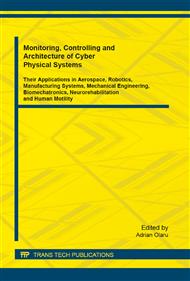[1]
G.D. Singh, J.A. McNamara Jr., S. Lozanoff: Mandibular morphology in subjectswithClass III malocclusions: Finite Element morphometry.
Google Scholar
[2]
G.D. Singh, J.A. McNamara Jr., S. Lozanoff: Finite-element morphometry of soft tissuemorphology in subjectswithuntreatedClass III malocclusions.
Google Scholar
[3]
G.D. Singh, J.A. McNamara Jr., S. Lozanoff: Allometry of the cranial base in prepubertalKoreansubjectswithClass III malocclusions: Finite element morphometry.
Google Scholar
[4]
G.D. Singh, J.A. McNamara Jr., S. Lozanoff: Comparision of Mandibular morphology in Korean and European- American ChildrenwithClass III malocclusions: Finite Element morphometry.
DOI: 10.1093/ortho/27.2.135
Google Scholar
[5]
G.D. Singh, J.A. McNamara Jr., S. Lozanoff: Finite-element morphometry of soft tissue in prepubertalmorphology in Korean and European- American ChildrenwithClass III malocclusions.
Google Scholar
[6]
G.D. Singh, J.A. McNamara Jr., S. Lozanoff: Effect of the headgear- activator appliance in the treatment of Class II division 1 malocclusions: a geometric morphometricstudy.
Google Scholar
[7]
G.D. Singh, W.J. Clark: Soft tissuechanges in patientswithClass II division 1 malocclusionstreatedusingTwo Block appliance: Finite element scalinganalysis.
Google Scholar
[8]
G. D. Singh, L. E. Medina, W. M Hang: Soft Tissue Facial ChangesUsingBioblocAppliances: Geometric Morphometrics.
Google Scholar
[9]
S. Zachow, E. Gladiline, H. -C. Hege, P . Deuflhard: Finite-Element Simulation of Soft TissueDeformation.
Google Scholar
[10]
D. S. Strait, Q. Wang, P. C. Dechow, C. F. Ross, B. G. Richmond, M. A. Spencer, A. A. Patel: Modeling Elastic Properties in Finite-ElementAnalysis: HowMuchPrecisionIsNeededto Produce an Accurate Model?, The anatomical record part A 283A: 275–287 (2005).
DOI: 10.1002/ar.a.20172
Google Scholar
[11]
M. Geiger, J. Schneider, F. G. Sander: Finite element calculation of bone remodeling in orthodonticsbyusingforces and moments.
Google Scholar
[12]
M.L. Jones, J. Hickman, J. Middleton, J. Knox, C. Volp: A validated finite element methodstudy of orthodontictoothmovement in the HumanSubject.
Google Scholar
[13]
S. Chen, P.E. Lestrel, W. J.S. Kerr, J.H. McColl: Describingshapechanges in the humanmandibleusingelliptical Fourier functions, European Journal of Orthodontics 22 (2000) 205–216.
Google Scholar


